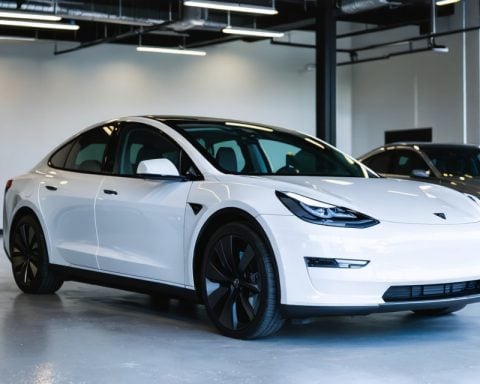- Dynamic Magnitude Charging (DMC) optimizes EV charging efficiency during off-peak hours using real-time energy grid data.
- DMC enhances grid stability by smoothing out energy loads, crucial as EV adoption increases.
- User-centric customization in DMC allows personalized charging schedules for cost-effective and convenient use.
- ChargePoint aims for widespread deployment of DMC across North America by 2030.
- DMC supports infrastructure scalability and sustainability, boosting renewable energy use during off-peak times.
- Economic benefits of DMC include potential reductions in operational costs, making EVs more affordable to consumers.
ChargePoint, the frontrunner in electric vehicle (EV) charging, is set to change the game with its cutting-edge technology, Dynamic Magnitude Charging (DMC). This innovative approach is poised to transform not only your charging experience but also the trajectory of energy sustainability. Here’s how it’s reshaping the future of EVs.
Efficiency Optimization: Imagine charging your EV with remarkable speed during off-peak hours. DMC smartly tweaks the charging output using real-time data from energy grids, ensuring your vehicle gets juiced up more quickly when demand is low. Say goodbye to unnecessary energy consumption!
Grid Stability: As the EV wave rises, the strain on energy grids grows. Enter DMC, the solution that evens out energy loads and prevents the spikes that threaten grid stability. It’s a pivotal shift that keeps the energy system balanced as the number of EVs climbs.
User-Centric Customization: DMC isn’t just smart—it’s tailor-made for your needs. With this technology, users can select their preferred charging times, balancing cost-efficiency and convenience to fit their schedules perfectly.
ChargePoint’s Vision for 2030: By the end of the decade, ChargePoint plans to deploy this visionary technology across North American charging stations, laying the groundwork for a seamless integration into future transportation infrastructure.
Market Impacts: This isn’t merely about faster charges; it’s a powerful catalyst for the widespread adoption of EVs. DMC technology tackles infrastructure scalability and enhances sustainability by promoting renewable use during off-peak times.
Economic Advantages: By potentially lowering operational costs, DMC could translate into savings for consumers, making EVs more accessible and appealing.
ChargePoint stands at the forefront of an energy-efficient revolution, steering us toward a brighter, sustainable future. Dive deeper into what this means for sustainable transport and prepare for an eco-friendly transformation in how we travel.
The Future of EV Charging: How Dynamic Magnitude Charging (DMC) is Revolutionizing Sustainability
What is Dynamic Magnitude Charging (DMC) and How Does It Work?
Dynamic Magnitude Charging (DMC) is an advanced technology developed by ChargePoint that optimizes how electric vehicles charge. By leveraging real-time data from energy grids, DMC adjusts the charging output to ensure that EVs receive power more quickly during off-peak hours. This smart adjustment not only speeds up the charging process but also minimizes unnecessary energy consumption, contributing to greater overall efficiency.
What Are the Pros and Cons of Implementing DMC in EV Infrastructure?
– Pros:
– Efficiency Optimization: Utilizes real-time data to charge EVs faster during off-peak hours, reducing the time needed to juice up.
– Grid Stability: Balances energy loads, helping maintain grid stability as more electric vehicles hit the roads.
– User-Centric Customization: Offers flexibility in charging times, allowing users to balance cost-efficiency with personal convenience.
– Economic Advantages: Potentially reduces operational costs, translating to consumer savings and making EVs more affordable.
– Cons:
– Implementation Costs: Initial setup and integration into the existing infrastructure may require substantial investment.
– Technological Complexity: Managing real-time data and maintaining system reliability could present challenges.
How Will ChargePoint’s Adoption of DMC Impact the Market for Electric Vehicles?
ChargePoint’s deployment of DMC by 2030 is poised to have significant impacts on the EV market. First, it will likely accelerate the adoption of electric vehicles by alleviating concerns about charging times and costs. With improved grid stability and efficiency, the wider use of DMC can support renewable energy adoption and reduce the carbon footprint of transportation. Additionally, the expected operational cost savings could make electric vehicles more accessible to a broader audience, which is crucial for market expansion.
For more insights about sustainable transport and advancements in electric vehicle charging, visit the homepage of ChargePoint.













